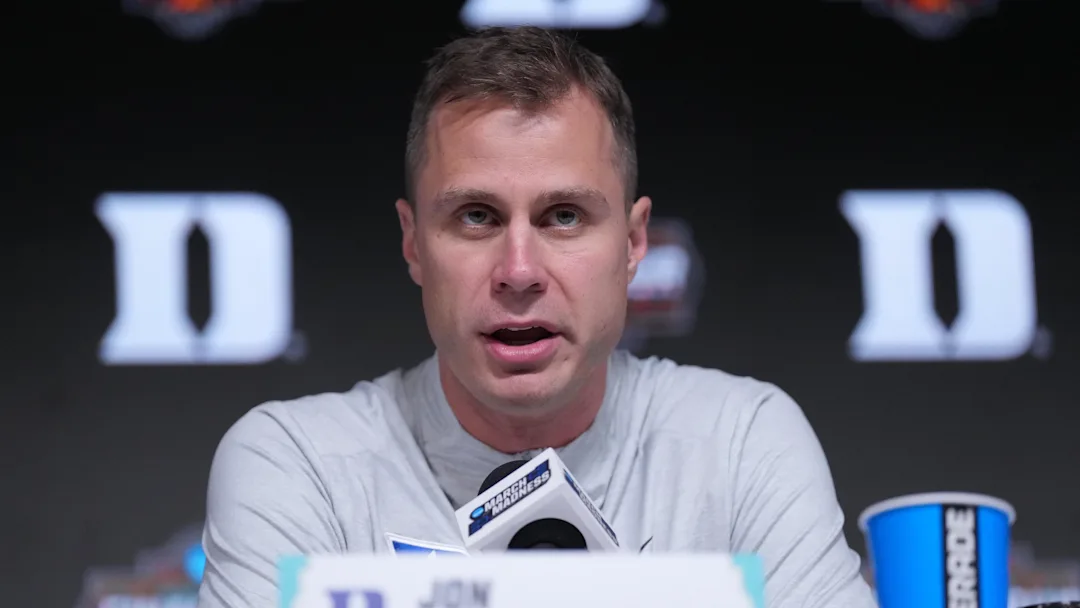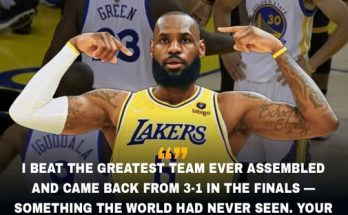It’s been a long offseason already in Durham, and the mood around Duke basketball has shifted in a way few anticipated just a month ago. What once seemed like a picture-perfect transition into another title-contending campaign is now clouded by unexpected developments, a flurry of insider whispers, and a slowly unraveling roster. For all the high expectations that come with donning the blue and white, the news leaking from the program recently hasn’t inspired confidence—it’s sounded the alarm.
According to a trusted insider with ties to the coaching staff, there’s “bad news” swirling around the roster, and while some of it may still be under wraps publicly, the signs are difficult to ignore. The situation is fluid, but the consensus among those closest to the program is that Duke is bracing for an offseason of turmoil.
The first domino to fall was the announcement that sophomore guard Caleb Foster would undergo surgery and is expected to miss significant time, potentially the entire upcoming season. That revelation didn’t receive much national attention, but internally, it set off a chain reaction. Foster, once viewed as a key contributor with breakout potential, was expected to serve as the primary ball handler and a stabilizing force in the backcourt. His loss not only puts Duke in a bind rotationally, but it also places added pressure on a freshman class that may not be ready for the spotlight.
Compounding matters, speculation continues to swirl about the status of senior guard Jeremy Roach. Although he has yet to officially declare his next move, multiple sources close to the program believe Roach is leaning toward staying in the NBA Draft rather than returning for a final season. If true, Duke loses its most experienced leader and clutch performer, a player who has served as the program’s heartbeat through countless battles. Without Roach, the Blue Devils are staring down a leadership void with no obvious answer.
The issues don’t end there. Insider chatter has also pointed to uneasiness in the locker room, particularly among the incoming freshmen. While Duke once appeared to have one of the most impressive recruiting classes in the country, uncertainty about roles, playing time, and the team’s trajectory has created what one source called a “confidence crisis.” Players who committed with visions of early success and deep tournament runs are now asking tough questions about the direction of the program.
There’s also growing concern around the development of some key returners. While players like Jared McCain have shown flashes of brilliance, insiders say there’s frustration within the staff over the uneven progression of others. Reports suggest that some projected contributors are behind in their offseason conditioning and haven’t shown the growth expected after a full year in the system. One insider even noted that “there’s not as much internal hunger as you’d hope to see from a group trying to win a national title.”
And then there’s the NIL elephant in the room. Duke has traditionally been more reserved than other power programs when it comes to doling out massive name, image, and likeness deals. But with other schools aggressively courting talent with multimillion-dollar offers, it’s becoming harder for the Blue Devils to hold the line. Insiders indicate that at least one high-profile recruit was nearly flipped by a late NIL push from a rival blue blood, and while the player ultimately stuck with Duke, the scare rattled the program’s power brokers. There’s a growing sense among insiders that Duke may have to evolve—or risk being left behind.
Another concern bubbling under the surface is staff cohesion. While head coach Jon Scheyer has largely maintained the same core group since taking over, there are whispers of friction behind the scenes. Assistant coaches are reportedly not aligned on strategy and player usage, and that tension may have spilled onto the practice court. One source claimed that recent practices lacked “the sharpness and structure of past Duke teams” and pointed to a lack of accountability as a possible reason for the stagnation.
All of this comes as the program tries to recover from a disappointing early exit in March Madness. While expectations were sky-high entering the tournament, Duke flamed out in the Sweet 16, exposing flaws in depth, execution, and toughness. The sting of that loss still lingers, and according to one insider, some returning players “haven’t processed the loss the right way.” Rather than using the defeat as motivation, there’s been what the source called “a concerning level of complacency.”
For a program like Duke’s, where the standard is Final Fours and banners, anything less than full-throttle pursuit of excellence is unacceptable. But the current state of the roster suggests that this team may not be aligned with that standard. There’s talent, to be sure—but talent alone doesn’t win championships. It takes chemistry, grit, and leadership, all of which are currently in short supply.
That reality has made the transfer portal a major focus, but so far, results have been mixed. Duke has reached out to several experienced guards and wings, hoping to bolster the rotation with veterans who can steady the ship. However, multiple targets have chosen other destinations, citing concerns about fit, opportunity, and NIL support. One portal entrant reportedly told a source that he “loved the brand but didn’t see a clear path to being valued on and off the court.” That kind of feedback is difficult to swallow for a program with Duke’s prestige.
The news isn’t all doom and gloom—there’s still time for Scheyer and his staff to retool and rally the group—but make no mistake: the Blue Devils are at a crossroads. The upcoming months will be pivotal in determining whether this roster can overcome its current issues and gel into a contender or if the program is headed for another underwhelming season.
The problem is that hope alone isn’t a strategy, and insiders are skeptical that enough is being done behind the scenes to turn the tide. Several close to the program have voiced concern about the messaging coming from the top, noting that “the urgency just isn’t there.” In an era where college basketball is more volatile and transactional than ever, resting on past reputation won’t cut it.
Adding to the unease is the rapidly rising competition. Programs like UConn, Kansas, and Alabama have aggressively reloaded, locking in both elite recruits and top-tier transfers. Even traditional rivals like North Carolina and Kentucky—despite their own challenges—are pushing forward with renewed energy. If Duke can’t keep pace, it risks falling from the sport’s top tier into a place of perpetual rebuilding, an unthinkable outcome for a program that once set the standard for sustained dominance.
In many ways, this offseason is Jon Scheyer’s most important yet. He’s shown flashes of brilliance as a recruiter and tactician, but the honeymoon period is over. The fanbase is restless, the insiders are raising red flags, and the players are looking for direction. Scheyer’s ability to galvanize this group, navigate the transfer portal, and reset the culture will define not only the 2025-26 campaign but also the next era of Duke basketball.
There’s still talent in the locker room. Players like McCain, Sean Stewart, and incoming freshman Khaman Maluach have all the tools to be difference-makers. But unless the internal issues are addressed and the team comes together with purpose and clarity, talent alone won’t be enough to carry Duke through the grind of an ACC season and the crucible of March.
One longtime supporter put it best: “This program used to be bulletproof. Now it feels like it’s cracking under the pressure.”
That may sound alarmist, but in today’s college basketball climate, perception can quickly become reality. For Duke to reclaim its place at the top, it will need more than just historical prestige and highlight-reel freshmen. It will need leadership, resilience, and a roster that believes in itself as much as the fans want to believe in them.
For now, though, the message from inside is clear: the roster is not in a good place. And unless something changes quickly, the “bad news” may just be the beginning.



